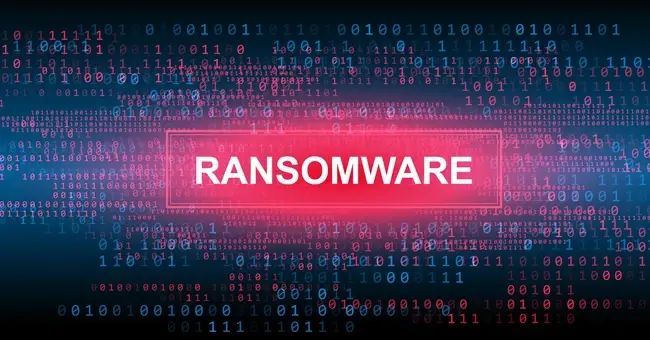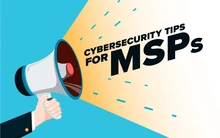
The digital landscape is increasingly becoming a battleground with ransomware attacks at the forefront of cyber threats.
These malicious activities are not just growing in frequency but also in sophistication, making it imperative for both individuals and organizations to fortify their defences. Understanding the importance of implementing effective protection measures against ransomware is crucial in today's interconnected world, where a single breach can lead to catastrophic outcomes.
This ransomware protection and prevention guide integrates the critical components and practices necessary to understand how to protect against ransomware, combining industry insights and practical recommendations.
Understanding Ransomware
Ransomware is a type of malware that encrypts a victim's files, with the attacker then demanding a ransom from the victim to restore access to the data upon payment. Users are shown instructions for how to pay a fee to get the decryption key. The costs can range from a few hundred dollars to thousands, payable to cybercriminals in Bitcoin.
There are several common types of ransomware, including crypto-ransomware, which encrypts various data types; locker ransomware, which locks the user interface and prevents the user from using the infected device; and scareware, which uses scare tactics to coerce users into paying up but does not actually harm files.
Impact of Ransomware Attacks
The consequences of ransomware attacks can be devastating. They can cripple organizational operations and result in significant financial losses due to data loss, downtime, and the costs associated with paying the ransom and recovering from the attack. For instance, the average cost of downtime due to ransomware rose to approximately $274,200 in 2023, a substantial increase from previous years, reflecting both the growing efficacy of these attacks and the increased value of the data being held hostage.
Key Elements of Ransomware Protection
Implementing robust cybersecurity practices is foundational in defending against ransomware. This includes establishing comprehensive cybersecurity policies that cover all bases—from secure network architectures to stringent access controls. Furthermore, regular employee training and awareness programs are vital, as human error remains one of the primary vectors for ransomware attacks.
Proactive Measures for Ransomware Prevention
Keeping software and systems updated is a critical preventive measure against ransomware attacks. Cybercriminals often exploit known vulnerabilities in software and operating systems. Regular updates ensure these loopholes are closed. Employing reputable antivirus and antimalware solutions also provides a strong line of defense, actively preventing ransomware from infecting systems.
Best Practices for Data Backup and Recovery
The best defence against data loss due to ransomware is a solid backup and disaster recovery plan. Regularly scheduled backups and periodic testing of restoration processes ensure that data can be quickly restored without paying the ransom. Using cloud services and maintaining offline backups further enhance data safety by providing redundancy.
1. Network Security Strategies
Network segmentation can help contain and limit the spread of ransomware if an infection occurs. Techniques like deploying firewalls, utilizing intrusion detection systems (IDS), and implementing strong encryption protocols are crucial in safeguarding sensitive information and restricting unauthorized access.
2. Email and Web Security
Educating users about the risks of phishing and social engineering attacks is crucial, as these tactics often serve as the gateway for ransomware. Implementing robust email filtering and web security solutions can significantly reduce the risk of such threats by blocking malicious emails and websites before they reach users.
3. Incident Response and Recovery Plan
A well-structured incident response plan is essential for minimizing damage in the event of a ransomware attack. This plan should outline specific roles and responsibilities and provide a clear roadmap for recovery. Quick and coordinated responses can significantly reduce the impact of ransomware attacks.
4. Ransomware Mitigation Tools and Technologies
Investing in advanced threat detection and mitigation technologies is crucial for staying ahead of ransomware attackers. Solutions like Endpoint Detection and Response (EDR) systems provide real-time monitoring and response to threats, significantly enhancing organizational security postures.
5. Monitoring and Threat Intelligence
Utilizing threat intelligence feeds and continuous monitoring systems helps organizations stay informed about new and emerging ransomware threats. This proactive approach is critical for early detection and rapid response to potential ransomware activities.
Knowing how to detect ransomware effectively also hinges on implementing systems that can identify unusual activity patterns that may indicate a ransomware infection, such as sudden file encryption or unauthorized changes to files and systems. Regular audits and real-time monitoring play a vital role in detecting these signs early, allowing for quicker containment and mitigation of damages.
Conclusion
Protecting against ransomware requires a multifaceted approach involving technology, strategy, and human vigilance. It's essential for organizations to prioritize cybersecurity and implement the outlined strategies to safeguard against the growing threat of ransomware. Only through comprehensive preparedness can businesses hope to defend themselves effectively against this formidable cyber threat.









